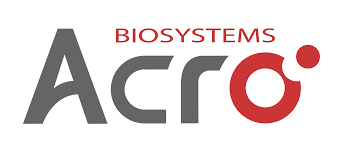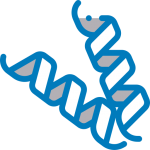
 Cynomolgus / Rhesus macaque IL-4 R alpha / CD124 Protein, Fc Tag
Cynomolgus / Rhesus macaque IL-4 R alpha / CD124 Protein, Fc Tag
ILR-C5258
50ug
Brand
ACROBiosystems
Description
Source :
Cynomolgus / Rhesus macaque IL-4 R alpha, Fc Tag (ILR-C5258) is expressed from human 293 cells (HEK293). It contains AA Met 26 – Arg 232 (Accession # G7Q0S7). In the region Met 26 – Arg 232, the AA sequence of Cynomolgus and Rhesus macaque IL-4 R alpha are homologus.
Molecule : IL-4 R alpha
Synonyms : IL4R,CD124,IL4RA
Format : Powder
Category : Bio-Markers & CD Antigens
Accession : N/A
Storage : -20℃
Shipping condition : Powder,RT
Molecular Weight : 50.4 kDa
Characteristics :
This protein carries a human IgG1 Fc tag at the C-terminus. The protein has a calculated MW of 50.4 kDa. The protein migrates as 60-90 kDa under reducing (R) condition (SDS-PAGE) due to glycosylation.
Endotoxin Level : Less than 1.0 EU per μg by the LAL method.
Buffer : Tris with Glycine, Arginine and NaCl, pH7.5
Description :
IL-4 is a pleiotropic cytokine produced by activated Th2 cells and mast cells, and plays a pivotal role in immune responses. The effects of IL-4 are mediated after binding to high affinity receptor complexes present on hematopoietic as well as non-hematopoietic cells. Hematopoietic cellular responses to IL-4 are mediated by a high affinity receptor complex comprised of the 140 kDa IL4Rα (CD124)subunit and the 70 kDa common cytokine γc chain (CD132).
Interleukin 4 Receptor (IL4R) also known as CD124, IL4Rα and BSF receptor, is a type I cytokine receptor produced by activated Th2 cells and mast cells, and plays an important role in Th2-biased immune responses, alternative macrophage activation, mucosal immunity, allergic inflammation, tumor progression, and atherogenesis. A soluble form of the encoded IL4R protein can be produced by an alternate splice variant or by proteolysis of the membrane-bound protein, and this soluble form can inhibit IL4-mediated cell proliferation and IL5 upregulation by T-cells. IL4R can alternatively associate with IL13Ra1 to form the type II receptor which is responsive to both IL4 and IL13. Interleukin-4 receptor has been shown to interact with SHC1.
References :
(1) Ikizawa, K., et al., 2000, Biochem. Biophys. Res. Commun. (UNITED STATES) 268 (1): 54–9.
(2) Kashiwada, M., et al., 2001, J. Immunol. (United States) 167 (11): 6382–7.
(3) Hage T., et al., 1999, Cell 97 (2): 271–81.
(4) Gessner,A. et al., 2000, Immunobiology. 201 (3-4): 285-307.
(5) WillsKarp, M., F.D. Finkelman, 2008, Sci. Signal. 1:pe55.
Application
Reactivity



